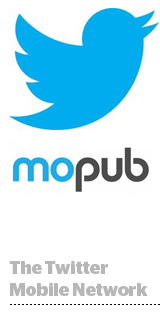 By Judith Aquino and Zach Rodgers
By Judith Aquino and Zach Rodgers
Twitter unveiled a native ad offering for app publishers on Thursday, courtesy of its MoPub mobile exchange subsidiary. Read the blog post.
While not new, the idea of “programmatic” native ads in mobile raises some interesting possibilities, agency execs told AdExchanger. Most of those possibilities hinge on Twitter’s willingness to let advertisers use its data to target their “native” exchange buys.
“Native in an in-stream placement is not new. The data [angle] is more interesting because it’s Twitter,” said JiYoung Kim, SVP for strategy and new solutions with Ansible Mobile. “MoPub lets them offer marketers a chance to respond in the moment. The reason we participate in Twitter is to be part of that moment.”
While Twitter’s ad targeting and data is not yet integrated into the MoPub offering, Tim Dunn, Roundarch Isobar’s director of mobile, said the advertising community can safely assume that will happen in the very near future.
“I can see this product being extremely useful for brands with specific marketing objectives, such as driving app downloads, or reaching younger users who are forging ahead into new social/mobile territories and leaving traditional mobile channels behind,” Dunn said.
Dunn added the new release is symbolic of the broad move of mobile advertising from a display model toward native formats. That shift broadly benefits social platforms like Twitter, which earns 70% of its revenue through mobile, all the more so if they can effectively extend their ad model to other publishers through programmatic channels.
“Brands are enjoying huge success with the use of formats from Google, Facebook, Twitter, et al,” Dunn said. “Not only are they often more effective, and more pleasing to the eye of both consumers and brand owners, but they’re also easier to book for agencies – a critical factor.”
US native-ad spending on social sites is forecast to reach $2.4 billion, or 39% of total US paid social ad spend this year, according to research company BIA/Kelsey. The firm also predicts that social native-ad spend will increase 93% to $4.6 billion by 2017.
But Doug Chavez, SVP for emerging media at Universal McCann, sees the native offering as only a first step for Twitter’s MoPub acquisition. The larger play may be in non-native formats.
“Native in app is a great place to start and experiment,” he said. “I believe the bigger opportunity will be outside of native when MoPub taps into the massive amount of intent data from Twitter and uses that across more than 3 billion daily ad impressions.”
Tango was the first app to sell native-ad inventory through MoPub. The native ads appear in two ways on Tango: as display ads in its news feed or as a condensed version in its chat tab.
The new offering will allow Twitter to build relationships with publishers such as Alt12 Apps, a maker of three life stage-oriented apps, which plans to roll out native ads in Q1 of next year.
Speaking about the native opportunity in general, Alt12 CEO Jennifer Wong said, “Developers will be able to move away from clunky banner ads but still be able to monetize their audience in a way that feels more natural and relevant to the user. Native ads that appear in a feed have the unique opportunity to be a part of the discussion and top of mind at the decision point for a consumer.”












